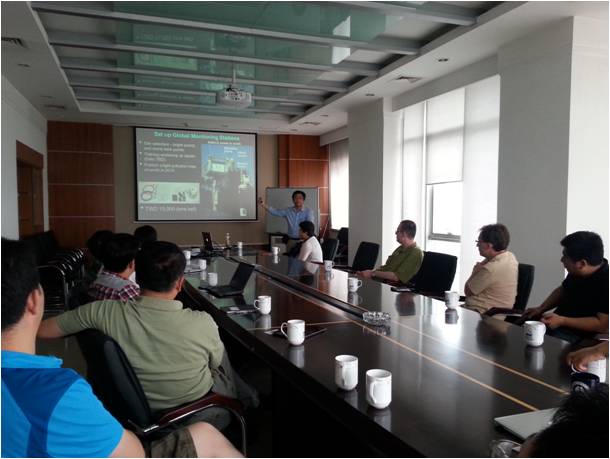The IAU Office of Astronomy Outreach (OAO) was formed in 2012 to promote astronomy education and communication to the general public. The director of OAO, Sze-leung Cheung, visited NAOC on June 19, 2014. Although OAO is located at National Astronomical Observatory of Japan, many research institutes around Asia, including NAOC, contribute to supporting the mission of OAO. The OAO, under the supervision of the IAU Executive Committee, helps publicize new discoveries in astronomical research and coordinates education activities. At this moment, two major campaigns that OAO are running are the International Year of Light 2015 and the Public Naming of Exoplanets.
The International Year of Light (IYL) will be celebrated during 2015. Following the success of the International Year of Astronomy in 2009, in which over 800 million people worldwide benefited from outreach activities, the IYL will likewise engage large numbers of people from many countries and regions in educational activities related to astronomy and physics. IAU is one of the supporting organization of the International Year of Light 2015 (IYL2015), and one of the IYL2015 cornerstone project is “Cosmic Light”, which connect astronomy to light. OAO is the central hub of coordination for the Cosmic Light cornerstone. IYL has been endorsed by the United Nations and activities will be carried out in cooperation with UNESCO. The director of OAO believes that coordinating educational activities among large numbers of people can be a sustainable way continue ongoing efforts at astronomy outreach. To this end, the OAO will also act as a database of resources for astronomy groups around the world.
One of the OAO projects discussed was how to maintain dark skies where people can enjoy viewing astronomical objects, especially in urban areas. The OAO director showed results of a study of night sky brightness conducted at various locations around Hong Kong. In a map, he showed that, in some places, the measured brightness of the night sky is more than 1000 times brighter than what the IAU considers to be a satisfactory value for a dark sky. He would like to expand this type of study and make a larger map of night sky brightness in other parts of the world. The OAO director noted that, although many factors like weather, phase of the Moon and amount of air pollution affect night sky brightness, human activities and artificial lighting represent the dominant source of light pollution. He also remarked that the results of this study should encourage better management of light to save energy and conserve dark skies that people can enjoy.
On the other hand, IAU has also decided to name exoplanets, however, using a different approach than the naming of solar system bodies like asteroids or comets, the naming of exoplanet will involve public voting and proposal nominations from public organizations.

| Related accessories |
|---|
| Related documents |
|---|

Address: 20A Datun Road, Chaoyang District, Beijing, China code: 100012
Tel: 010-64888708 E-mail: naoc@nao.cas.cn

